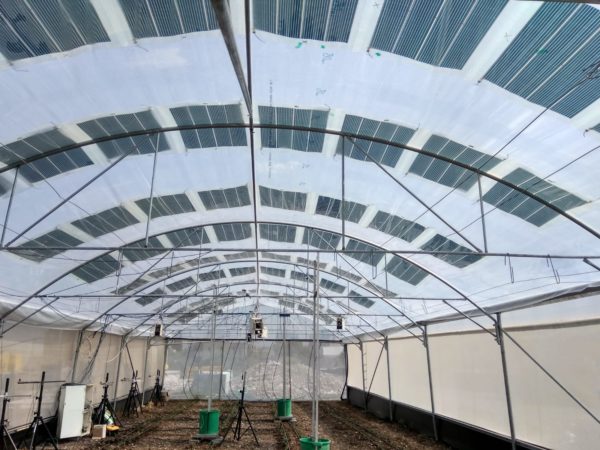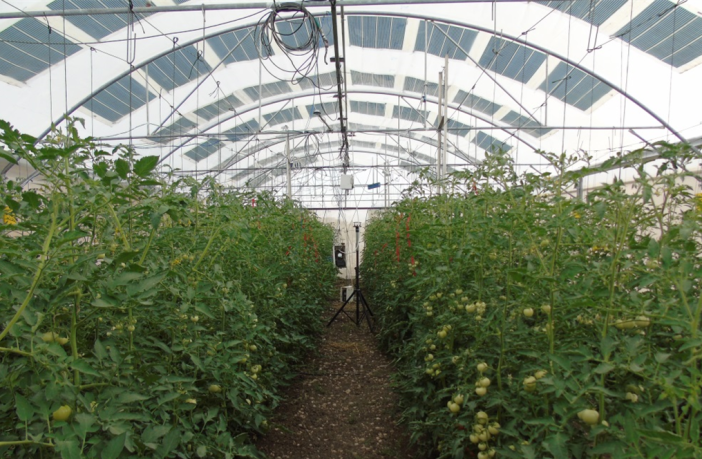- Israeli scientists have combined solar power with crop growth in polytunnel greenhouses by developing an organic PV (OPV) solution.
Polytunnel greenhouses are typically covered with polyethylene. They are used to grow large amounts of fruits and vegetables that require more heat during the winter months. They are harder to shade than those covered with glass.
“OPV properties are more suitable than conventional silicon for polytunnel greenhouse applications,” researcher Esther Magadaley told pv magazine. “They are lightweight, flexible and the polyethylene encapsulation material of the OPVs is similar to the polyethylene cover material of a greenhouse.”
Magadaley said OPV solutions can be semitransparent, come in different colors with different spectral transmittance properties, and transmit as much of the light spectrum needed for plant growth, while using the other parts of the light spectrum for electricity production.
“This way, we can produce electricity without affecting crop growth,” she explained.
In their experiment, the scientists used solar modules based on organic cells relying on a donor material known as PBTZT-stat-BDTT-8. Each panel has a power conversion efficiency of 3.3%, a nominal power of 14 W, a site of 800 mm x 1,000 mm x 0.6 mm, and an active area of 655 x 855 mm. Due to its low light transmittance of the panel, which is around 23%, only 37% of the greenhouse’s roof area was covered with the modules.

The modules were built with conventional organic solar cells. Image credit: Triangle Research and Development Center
“When considering the combined effect of the modules across the curved roof, their typical combined output and average PCE were 105Wh and 0.65% on a sunny day and 81Wh and 0.86% on a cloudy day,” the researchers said.
The organic panels were also found to have lower module temperatures compared to their crystalline silicon counterparts, which resulted in lower degradation rates. However, some of the organic modules also suffered from accelerated degradation, which was due to the mechanical stress caused by movements of the tunnel sheeting due to wind.
Efficiencies of the OPV modules used in this study peaked at around 3%, which was relatively low in comparison to laboratory-scale cell efficiencies of over 17% that were recently reported. Utilizing more efficient modules would improve their economic viability, with increased production of renewable electricity,” the academics explained.
When asked about commercial viability, Magadaley said that current OPV prices do not reflect their lower potential costs compared to silicon technologies, because they are still manufactured on a small scale. “There are other studies that estimate OPV costs on a mass production scale, which would make OPV an economically viable option,” she added.
The researchers presented their proposed approach in “Integrating organic photovoltaics (OPVs) into greenhouses: electrical performance and lifetimes of OPVs,” which was recently published in the International Journal of Sustainable Energy. The research group includes scientists from Israel’s Institute of Agricultural Engineering, the Agricultural Research Organization, and the Triangle Research and Development Center
Author: Emiliano Bellini
This article was originally published in pv magazine and is republished with permission.











